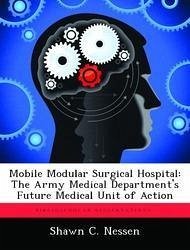Nicht lieferbar

Meeting the Needs of the Future Force: Transforming Air Support for the Unit of Action
Versandkostenfrei!
Nicht lieferbar
The Army is in the midst of a significant transformation into the Future Force. The purpose of this transformation is to provide the right kind of forces for the needs of the future. By the year 2010, the current Army organizational structure will be transformed into Units of Employment and Units of Action. The purpose of this monograph was to determine whether the current air support system would meet the needs of the Future Force's Unit of Action. The hypothesis was that the current air support system could meet the needs of the Unit of Action. The analysis in this monograph compared the cur...
The Army is in the midst of a significant transformation into the Future Force. The purpose of this transformation is to provide the right kind of forces for the needs of the future. By the year 2010, the current Army organizational structure will be transformed into Units of Employment and Units of Action. The purpose of this monograph was to determine whether the current air support system would meet the needs of the Future Force's Unit of Action. The hypothesis was that the current air support system could meet the needs of the Unit of Action. The analysis in this monograph compared the current air support system to the requirements of the Unit of Action to ascertain a satisfactory level of performance based on the criteria of suitable, feasible and acceptable. In order to compare the current air support system to the Unit of Action requirements, three functional categories were established. These functional categories were battle command, fire support and airspace command and control. These functional categories allowed for an objective comparison of two dissimilar systems. The culmination of the monograph's analysis invalidated the hypothesis. The current air support system was not capable of satisfactorily supporting the Unit of Action's requirements. In the process of completing the analysis, three shortfalls and one concern were identified. Recommendations for correcting the shortfalls were developed in conjunction with the identification of the shortfalls. The three identified shortfalls were: (1) the need for a physical location for the ALO within the design of the Unit of Action's Mobile Command Group or Tactical Command Post; (2) the Air Liaison Officer's need to be able to collaboratively plan with interagency or multi-national organizations; and (3) the transient need for the Tactical Air Control Party to assume the duties of an Air Support Operations Center under certain situations. The one concern was that the Networked Fires concept was inadequatel











